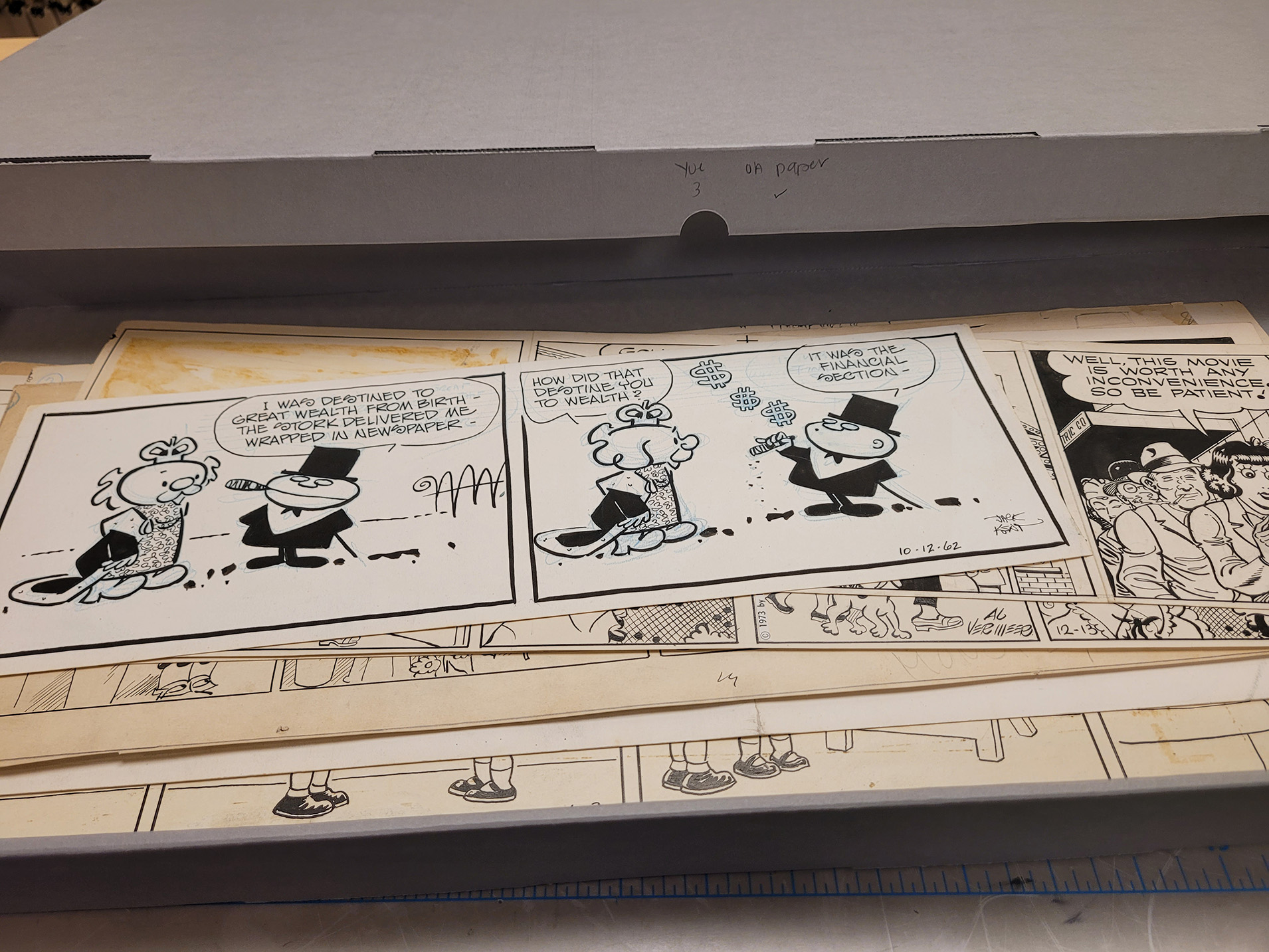
Comics by the Thousands: Enhancing the Center for the Humanities Comics Collection
Ten years ago, the Center for the Humanities transferred ownership of some of its materials to the Julian Edison Department of Special Collections. A portion of the collection, which contained thousands of comics, landed in the holdings of the Dowd Modern Graphic History Library (DMGHL). Skye Lacerte, the curator of the DMGHL, notes that the collection was the first notable comics acquisition for the DMGHL. It is especially valuable to scholars because the collection’s creator, Gerald Early, professor of English, African, and African-American Studies at Washington University, built it around his research and teaching interests.
The acquisition has since paved the way for other significant comic and cartoon archives, including two recent additions, the Craig Yoe Teaching Collection and the Archie Collection. Called the Center for the Humanities Comics Collection, it comprises over 100 boxes containing various formats: books, periodicals, LPs, and comics. The bulk of the materials consists of comic books spanning the second half of the twentieth century through the 1990s. Over the years, the materials have been heavily used for research, open houses, classes, and exhibitions.
Preserving the Comics Collection
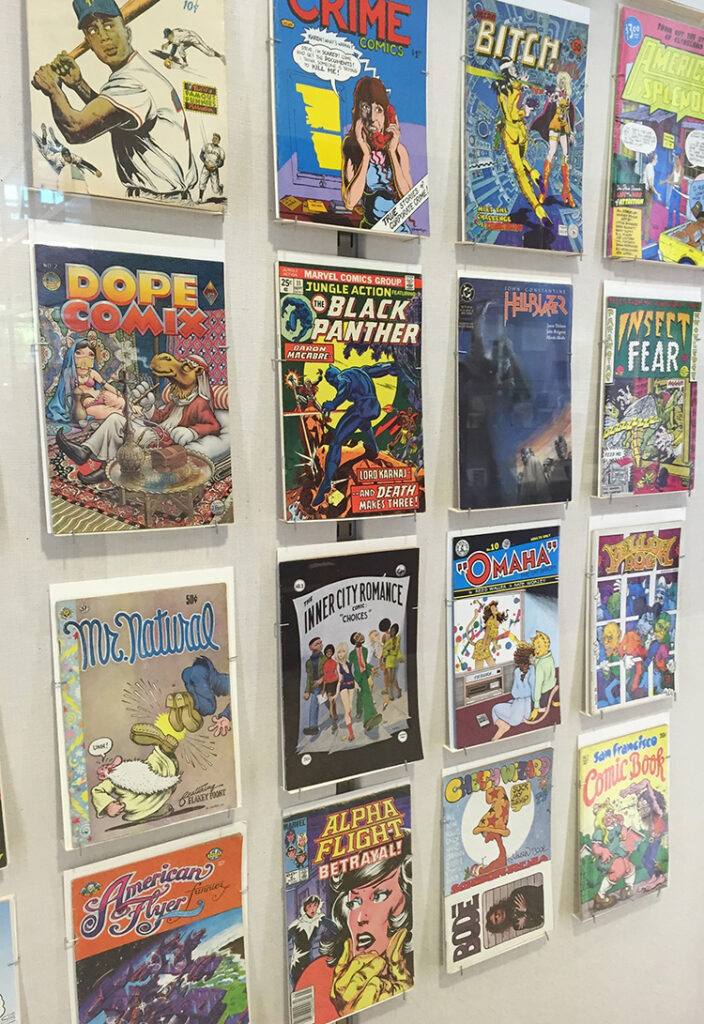
The Center for the Humanities Comics Collection is appealing both academically and personally and the materials provide diverse research opportunities in both content and form. Because the materials were curated around Early’s interests, the comics are full of characters, themes, and narratives rich in historical and cultural significance.
A number of titles feature a wide array of superheroes, both famous and uncommon, with each cover just as fascinating as the previous one. Furthermore, a study of the various comics shows stylistic trends, relevant color schemes, and even how specific printing processes and papers either enhance or detract from the overall aesthetic of the book itself. The scope of the collection is so broad that a patron could easily browse over five decades worth of publications from both Marvel and DC alone.
The items arrived from the Center for the Humanities in boxes and housings that were immediately labeled and made available for use. Over time, the boxes and comic sleeves and backings have started to degrade because the original housings were not of the highest archival quality. Since the materials have been heavily used during their tenure in special collections, it was decided by both myself and the DMGHL curator that a complete rehousing was necessary.
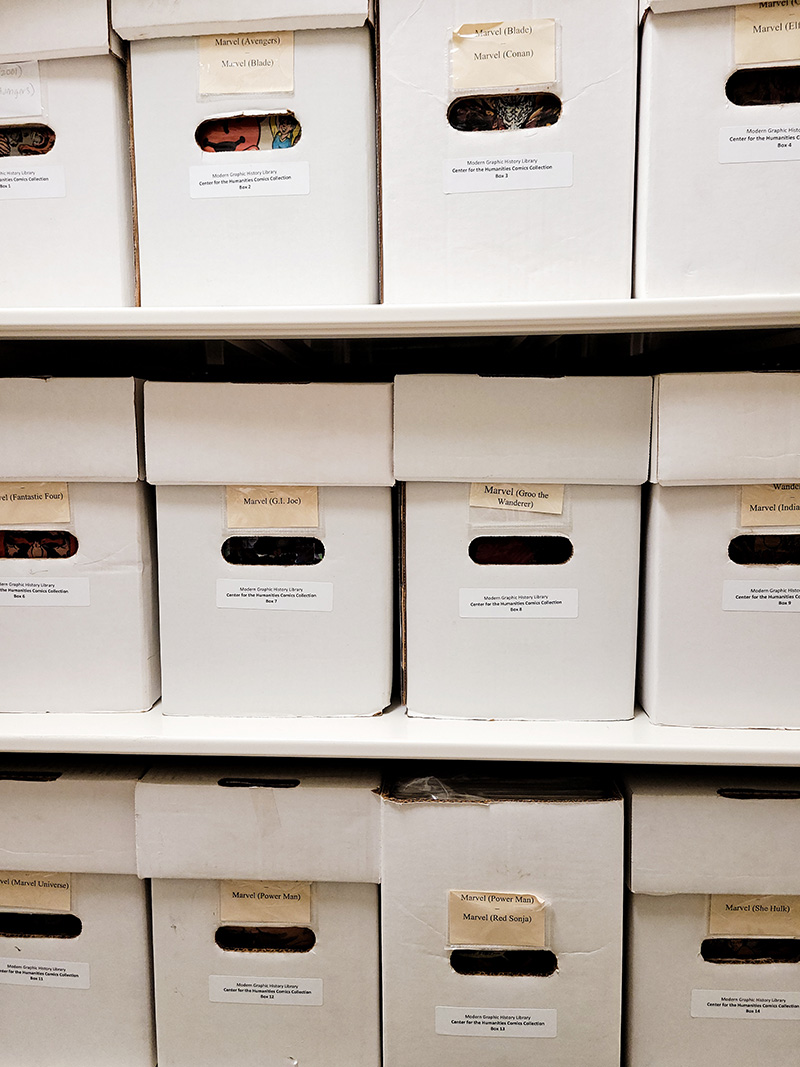
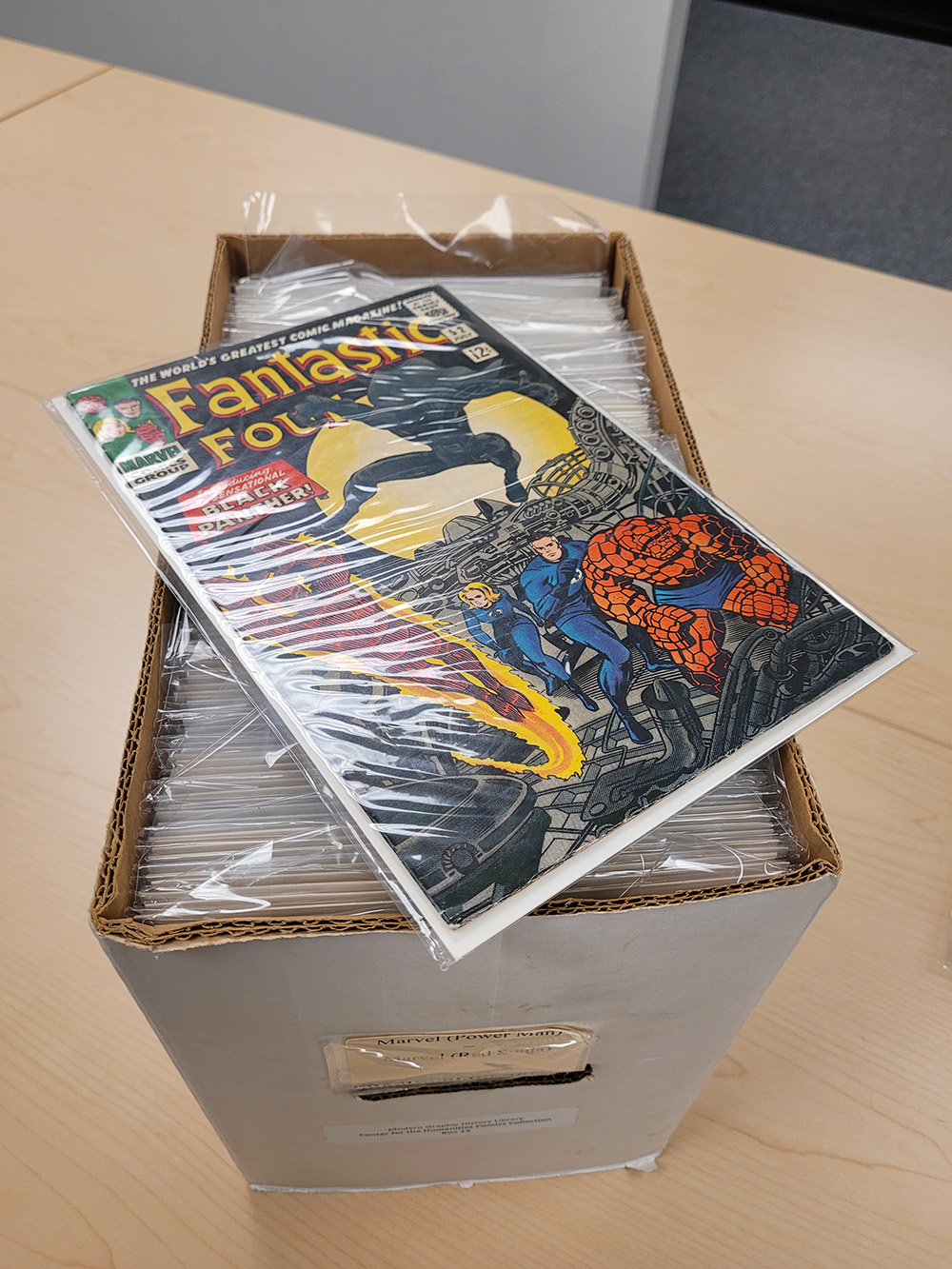
“Comics are a Unique Storytelling Medium”
Due to the size of the collection, it was decided that an MFA-IVC (Master of Fine arts in Visual Culture and Illustration) fellowship student would be hired to work on the rehousing and description of the comic books. Britain Bray, who has been working on this project since February, has a vested interest in the materials since the genre ultimately informs her work as an illustrator. In an interview, Britain took the time to elaborate on the importance of the Center for the Humanities Comics Collection.
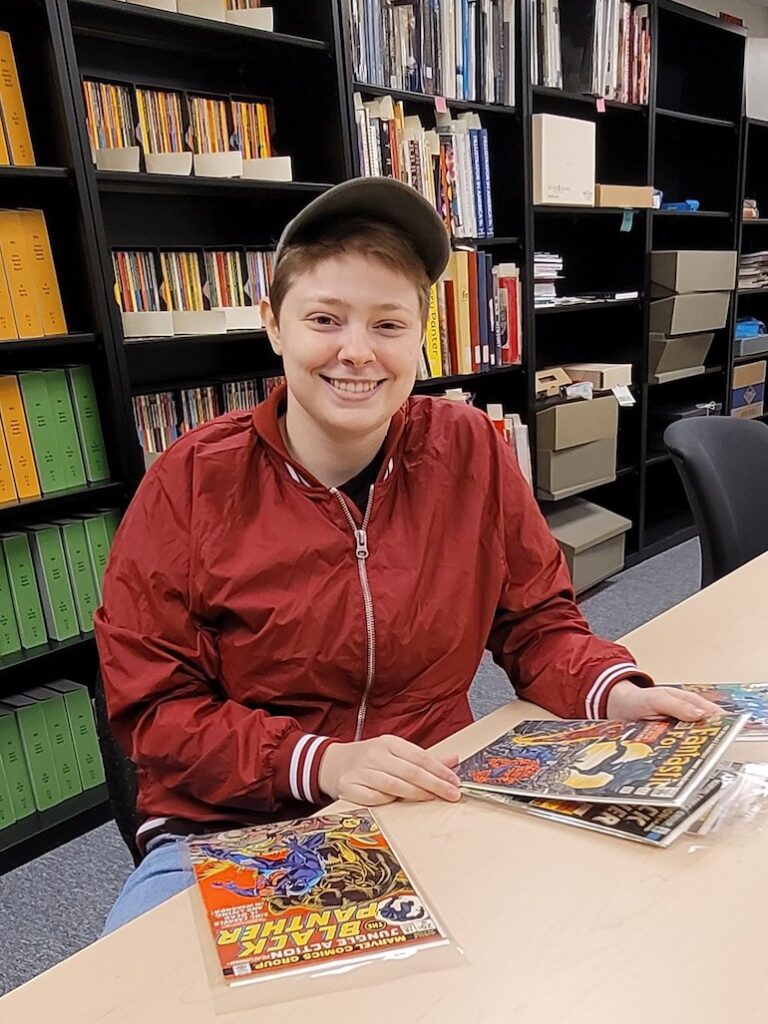
Andrea: What research value do comics have to you personally?
Britain: For me, comics are a unique storytelling medium that has a lot of room for creative freedom, even when heavily standardized by publishers. Looking through the different comics of this collection, which include several different eras, provides an interesting perspective on stylistic art trends, comics code history, and the different unique ways people “broke the rules.”
It’s also fascinating seeing how comics reflected cultural trends with examples such as the first Black superhero book Black Panther in the ’70s, to the unfortunate ripped-dress, fetishistic She-Hulk issues of the ’80s. By gaining an understanding of these comics I can see what worked and what didn’t, which in turn will inform my own work in comics. It’s a great resource.
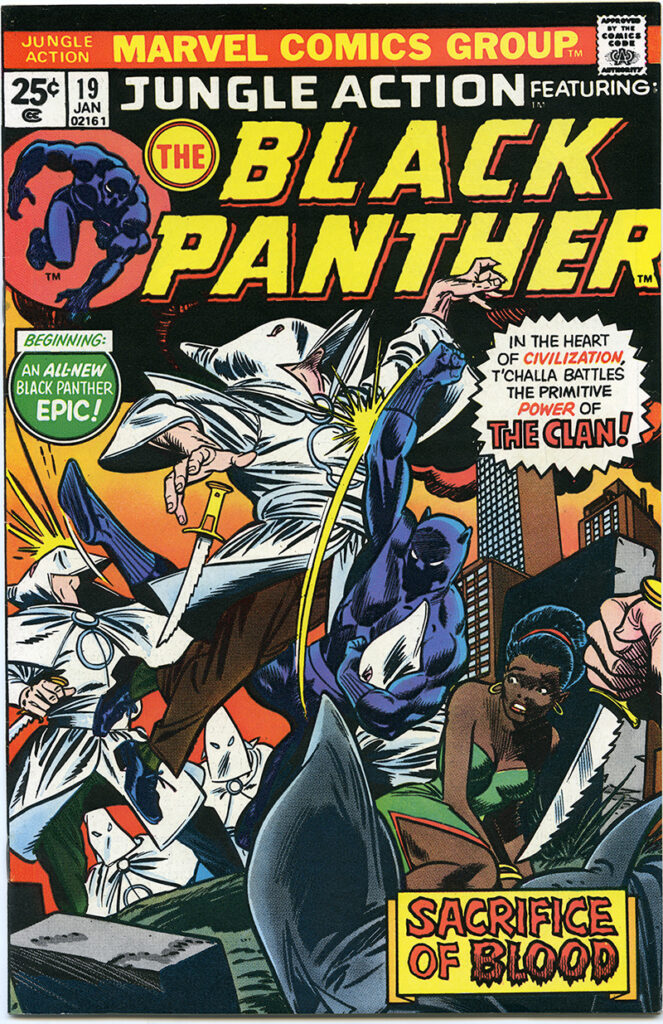
Andrea: After working with the comics over the last few months, what are some notable titles or aspects of the comics as objects themselves?
Britain: As I have been working mostly with Marvel comics, it has amazed me how many titles existed that I hadn’t heard of, either because they were simply obscure or were canceled after only a few issues. My favorite find was a canceled series called Dakota North from 1986, a book about a leather jacket-wearing, motorcycle riding, female private investigator. Not only was it a genuinely funny book, but it was also one of the few titles I found that was written by a woman. It only ran for five issues but it certainly felt beyond its time.
As for the books themselves, it was really interesting seeing how the quality of paper and color changed over time. Anything prior to the mid-’80s had terrible, fragile paper and faded ink. Post-80 there was a huge shift in paper quality and printing methods that allowed for brighter, more varied colors. That being said, I do have a particular fondness for the color palettes of early comics, they were always so saturated and colorful while a lot of the comics of the 90s became more dull and subdued.
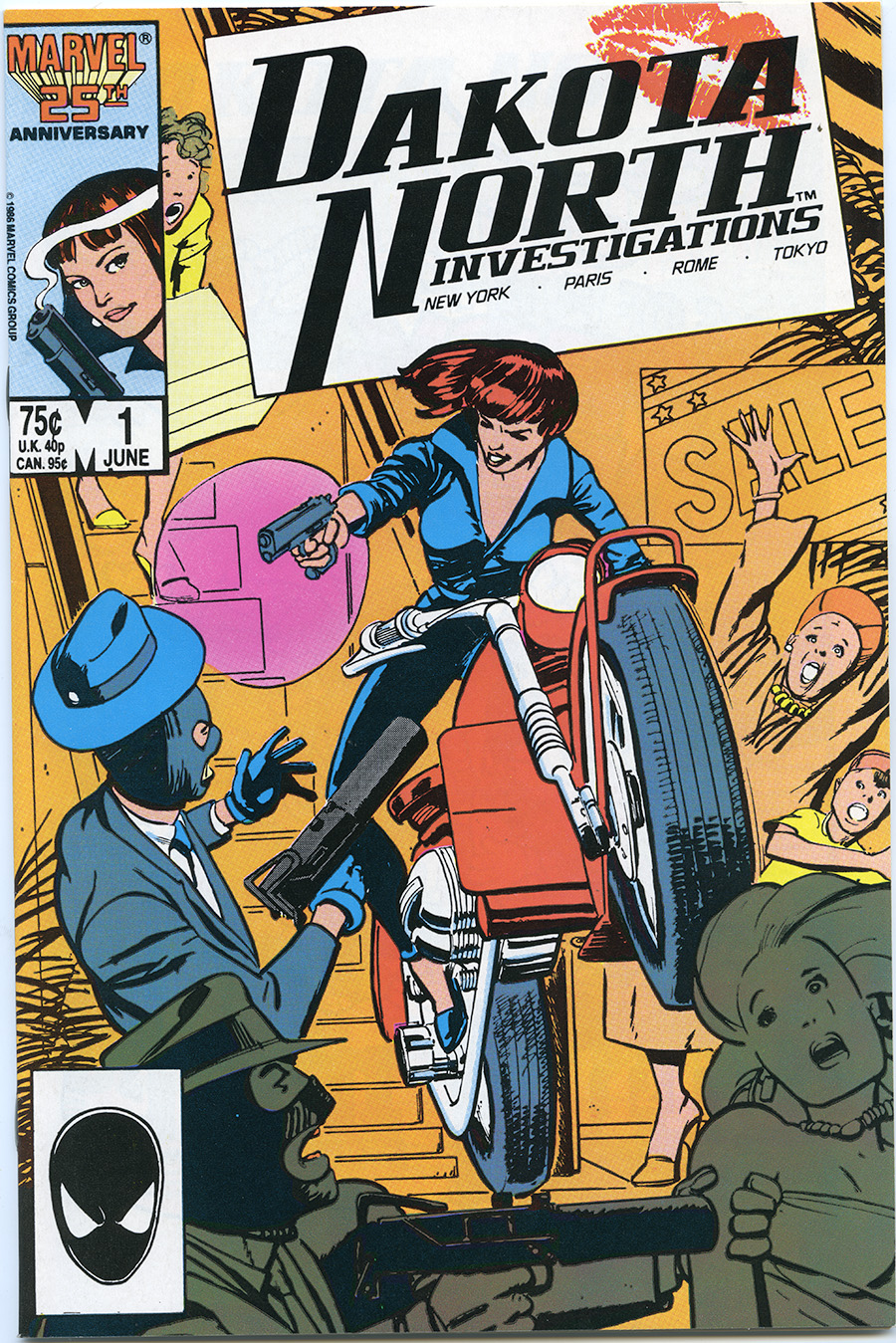
Andrea: Have you ever worked in an archive in the past? Is there anything you like or dislike about this project in particular?
Britain: I have never worked in an archive before; it’s a very interesting job handling all these objects. There is never a day where I don’t find something interesting, whether it be an early piece of cover art from a favorite artist, a particularity sexist character design, or a hilariously off-model Super Mario ad. There is always something to pique my interest and I will often read some of the more interesting comics I find during my break. That being said, going through a hundred Conan The Barbarian covers full of scantily-clad women being rescued by a dude with a bad haircut does get old pretty fast.
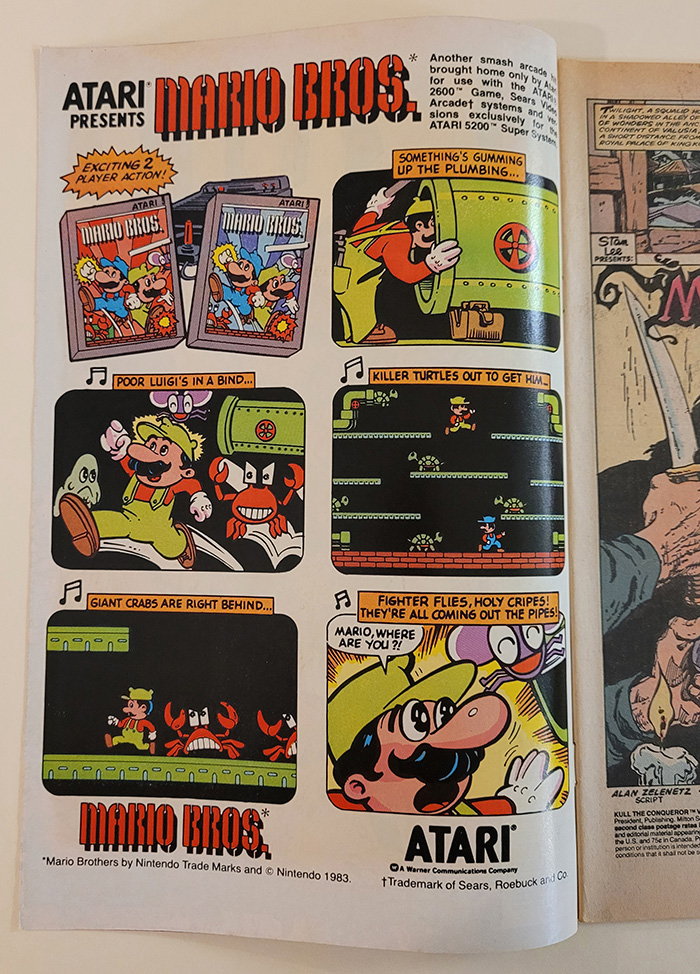
Given the scale of this project, Britain’s work will continue through the summer months. She has already rehoused and redescribed over a thousand comics but there are still fifty boxes that require treatment and review. In the near future, users can expect a newly updated finding aid that more accurately describes the contents of the Center for the Humanities Comics Collection. The work being done on this collection is a subtle reminder of the complexities of continued preservation and enhancement that are necessary for many existing archives in Special Collections.